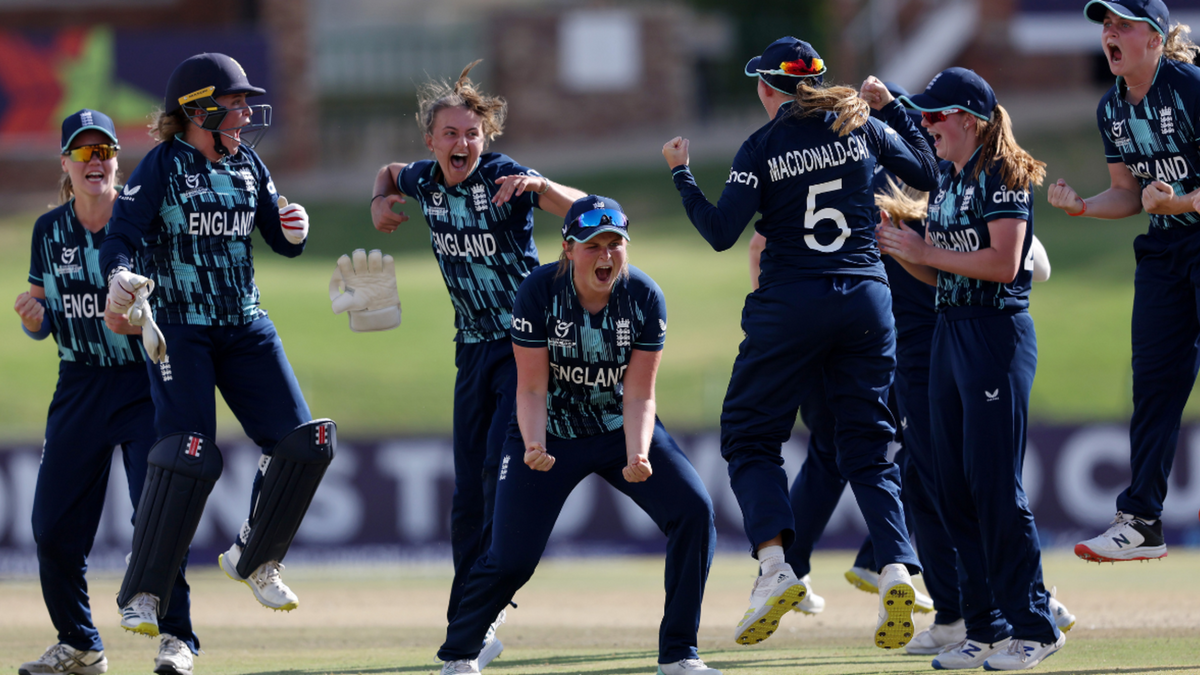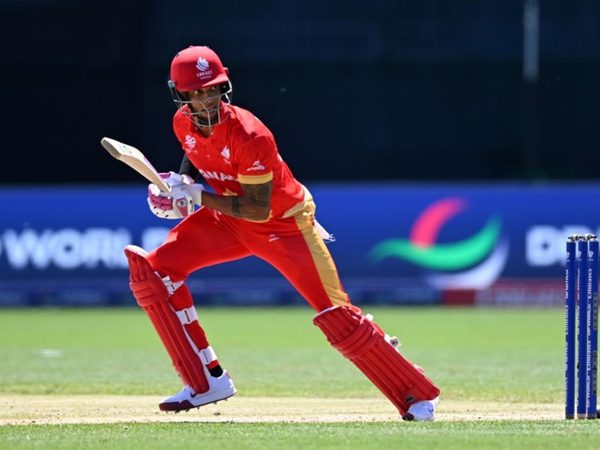
England’s stunning win over Australia in the semi-final of the Women’s U19 T20 World Cup was truly a finish for the ages, writes Katya Witney.
A boundary, a wicket, eight dot balls and finally another wicket. For nine excruciating deliveries, Australia needed four runs to reach the final of the U19 World Cup. After Milly Illingworth hit a four from the first ball of the 17th, taking the equation down to one shot required, it took a special five minutes of cricket to deny Australia what had looked a straightforward win from pretty much the first five overs of the match.
But Ryana MacDonald-Gay’s sharp throw from mid-off, demolishing the non-striker’s stumps with Illingworth just short of her ground, evened the equation. Australia needed one ball, England needed one ball.
What happened between then and England’s victory was vintage knockout cricket, with every ball an event. A play and a miss and a missed stumping. A proper tail-ender at the crease, tensions ramped up as each dot played out. As another over closed out, Grace Scrivens was once again faced with the choice of who to throw the ball to in the most pressurised of situations. Having opted for spin in 16th and 17th which had conceded 25 runs, and with Ellie Anderson and Alexa Stonehouse still available, Scrivens took on the ultimate responsibility of bringing herself on to bowl the over in which the match would be decided.
Four excruciating dot balls later, Scrivens floated one through the air which thumped plumb into Maggie Clark’s pad. After a three-second age as the England fielders screamed in persuasion, umpire Sarah Dambanevana raised her finger and chaos ensued. The Australia batters heartbroken, the dug-out in shock, and the England camp tumbling all over each other in celebration. Seren Smale on the floor, sub-fielders in neon bibs running onto the field, from the noise and ecstasy of those in England shirts and despair on those in yellow, the emotional energy of what had just transpired was written all over the field.
Scrivens was key in all aspects of the game. Her dismissal, which left England 38-6, seemingly ended their hope of posting a defendable total. Her miserly three overs prevented Australia from running away chasing a small total, her wicket at the end sealing the deal. Hannah Baker’s game-changing 3-10 may have won her Player of the Match, but Scrivens was the anchor that made the result possible. The second-leading run scorer of the competition so far, owner of the highest individual score and with an average of 48.16, to those who have followed her young career to date there’s little surprise in what she has brought to the tournament.
Stories like Scrivens’, who has been touted for so long as a future star, and thrilling cricket the likes of which unfolded in Potchefstroom today show the depth of the importance of the U19 edition of the tournament. The stage it has given young cricketers to entertain and showcase their abilities is more than just another rung on a development pathway. Today, teenagers from England and Australia eclipsed the action in England men’s ODI against South Africa and pulled the attention away from the international and franchise action going on elsewhere.
There will be BBC radio coverage of the final on Sunday, live streaming available on ICC.TV, with Sky Sports Mix also carrying the game. Shafali Verma and Risha Ghosh’s India will go up against Scrivens and co. Regardless of what happens in that match and who lifts the trophy at the end, this tournament has allowed cricket’s future stars a piece of the spotlight, and England and Australia used it to steal the stage today.







